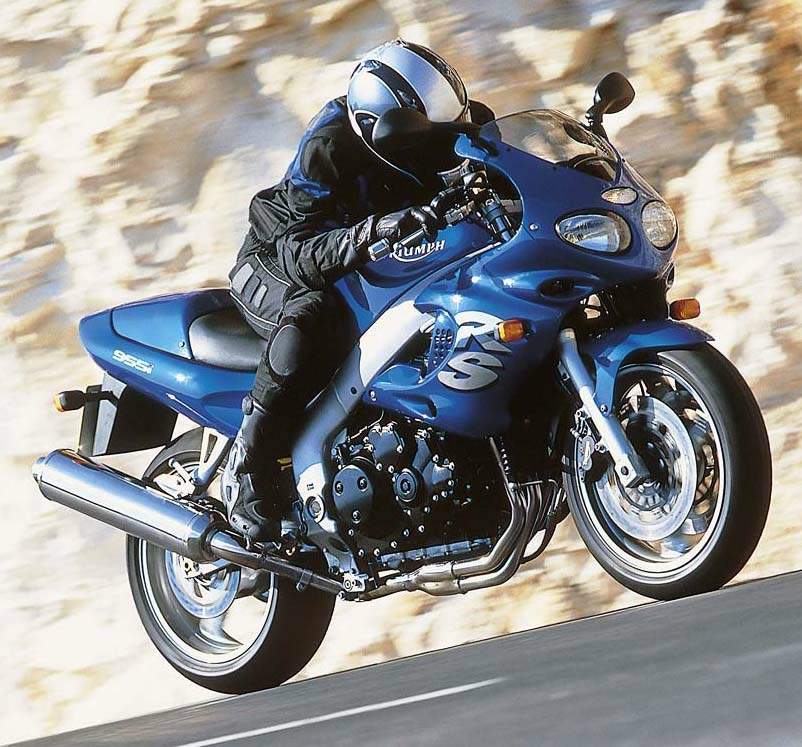
|
|
|
|
|
|
Classic Bikes
Custom Bikes
Individual
Racing Bikes AJP
AJS
Aprilia
Ariel
Avinton / Wakan
Bajaj
Benelli
Beta
Bimota
BMW
Brough Superior
BRP Cam-Am
BSA
Buell / EBR
Bultaco
Cagiva
Campagna
CCM
CF Moto
Combat Motors
Derbi
Deus
Ducati
Excelsior
GASGAS
Ghezzi Brian
Gilera
GIMA
Harley Davidson
Hero
Highland
Honda
Horex
Husaberg
Husqvarna
Hyosung
Indian
Jawa
Kawasaki
KTM
KYMCO
Laverda
Lazareth
Magni
Maico
Mash
Matchless
Mondial
Moto Guzzi
Moto Morini
MV Agusta
MZ / MuZ
NCR
Norton
NSU
Paton
Peugeot
Piaggio
Revival Cycles
Roland Sands
Royal Enfield
Sachs
Sherco
Sunbeam
Suzuki
SWM
SYM
Triumph
TVS
Ural
Velocette
Vespa
Victory
Vincent
VOR
Voxan
Vyrus
Walt Siegl
Walz
Wrenchmonkees
Wunderlich
XTR / Radical
Yamaha
Zero
Video
Technical
Complete Manufacturer List
|
Triumph Sprint RS
The Sprint RS is a half-faired variant of the Sprint ST sports tourer. Cheaper than the ST, it is aimed at riders who want a sportier ride than the ST, but with the good road manners of the Sprint chassis and engine. The chassis is largely the same as the ST, with the exception of the swingarm: the RS wears a cheaper, lighter double-sided swingarm rather than the ST's single-sided item. This change, and with less bodywork, gives the RS a hefty 8kg (181b) weight advantage over its sibling. Suspension and brakes are unchanged from the ST. The latest 2002 version of the RS is fitted with the same 955cc engine as the Speed Triple and the ST. The three-cylinder engine is a refined, well-developed powerplant with plenty of power and torque. Review
In Triumph nomenclature, Sprint denotes an all-rounder, not a short-range
hooligan tool Ė or it did until now. The latest edition of Hinckleyís everybike
has an aggressive half fairing, sportier seating and steeper steering geometry,
making it the most flickable triple yet.
The seating position is a good deal more forward than on the ST, throwing more
weight on the wrists. Not as extreme as the Daytona or TT600 but it works well
in canyon country while being livewithable in town; itís a compromise, but a
workable one. The back of the fuel tank is pleasantly narrow and the saddle is
broad, flat and well padded; it remained comfortable during the course of
several two-hour rides.

|
|
|
Any corrections or more information on these motorcycles will be kindly appreciated. |